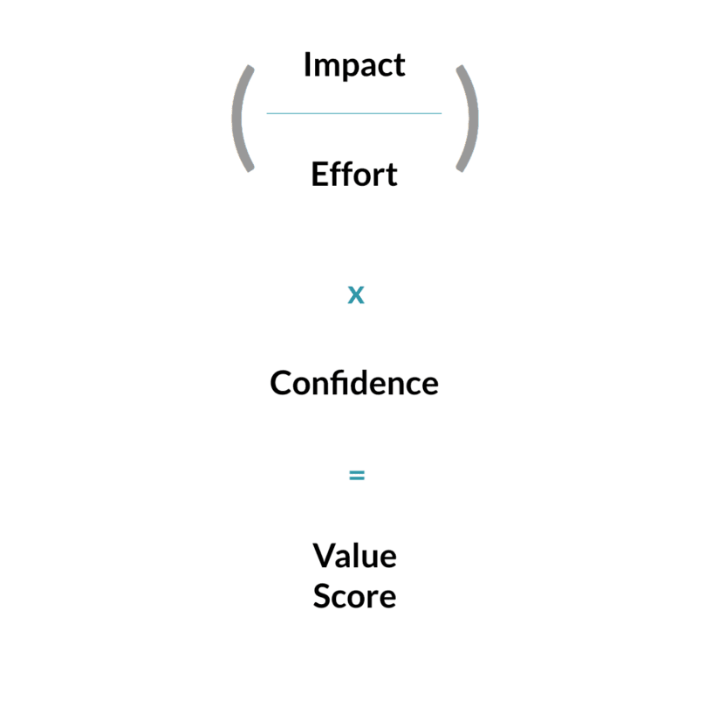
What is the ICE Model?
The ICE Model is a prioritization framework that scores initiatives based on three dimensions: Impact (the potential benefit if successful), Confidence (your certainty of achieving the expected results), and Ease (how simple it is to implement). By multiplying these three scores, ICE provides a single number that helps you compare and rank different options objectively.
The Origins in Growth Hacking
The ICE Model emerged from the fast-paced world of growth hacking, where teams needed to quickly evaluate and prioritize hundreds of potential experiments. Sean Ellis, who coined the term "growth hacking," popularized ICE as a way to bring discipline to the experimental process. The model's beauty lies in its recognition that the best ideas aren't just those with high impact—they must also be achievable and backed by reasonable confidence in their success.
How to Use the ICE Model Step by Step
1. List Your Options
Create a comprehensive list of all initiatives, projects, or ideas you're considering. Don't filter at this stage—include everything from quick wins to moonshots.
2. Define Your Scoring Scale
Choose a consistent scale for all three factors. Common options:
- 1-5 scale (simple, less granular)
- 1-10 scale (more nuanced, most popular)
- 1-100 scale (very detailed, for complex decisions)
3. Score Impact
Ask: "If this succeeds, how significant will the benefit be?" Consider:
- Magnitude of potential results
- Number of people/areas affected
- Strategic importance
- Long-term versus short-term effects
10 = Transformational impact 5 = Moderate impact 1 = Minimal impact
4. Score Confidence
Ask: "How certain am I that this will achieve the expected impact?" Consider:
- Past experience with similar initiatives
- Available data or evidence
- Clarity of cause and effect
- External factors you can't control
10 = Very high confidence (90%+ certainty) 5 = Moderate confidence (50% certainty) 1 = Low confidence (10% certainty)
5. Score Ease
Ask: "How easy is this to implement?" Consider:
- Time required
- Resources needed
- Technical complexity
- Political or organizational barriers
10 = Can implement immediately with minimal effort 5 = Moderate effort and resources required 1 = Extremely difficult, expensive, or time-consuming
6. Calculate ICE Scores
ICE Score = Impact × Confidence × Ease
This multiplication ensures that initiatives must score reasonably well on all dimensions to rank highly.
7. Rank and Review
Sort initiatives by ICE score, but also:
- Look for patterns in your scoring
- Consider if any low-scoring items are strategic necessities
- Check if high scores align with your goals
- Adjust if the ranking doesn't feel right
Practical Examples
Product Feature Prioritization: A software team evaluates new features:
Feature A - User Dashboard:
- Impact: 8 (affects all users)
- Confidence: 9 (user research confirms need)
- Ease: 6 (moderate development effort)
- ICE Score: 432
Feature B - AI Recommendations:
- Impact: 9 (could transform user experience)
- Confidence: 4 (unproven technology)
- Ease: 3 (complex implementation)
- ICE Score: 108
Feature C - Dark Mode:
- Impact: 5 (nice to have)
- Confidence: 10 (straightforward feature)
- Ease: 9 (simple to implement)
- ICE Score: 450
Result: Dark Mode ranks highest due to high confidence and ease, despite lower impact.
Personal Project Prioritization: An entrepreneur evaluates side projects:
Project 1 - Online Course:
- Impact: 7 (passive income potential)
- Confidence: 8 (expertise in topic)
- Ease: 4 (significant time investment)
- ICE Score: 224
Project 2 - Consulting Service:
- Impact: 6 (good hourly rate)
- Confidence: 9 (proven track record)
- Ease: 8 (can start immediately)
- ICE Score: 432
Result: Despite lower impact, consulting ranks higher due to immediate feasibility.
Advanced Applications
Weighted ICE: Adjust the formula to emphasize certain factors:
- High-risk environment: Impact × Confidence² × Ease
- Resource-constrained: Impact × Confidence × Ease²
Team ICE: Average scores from multiple stakeholders for consensus
Dynamic ICE: Re-score periodically as circumstances change
Benefits and Life Impact
The ICE Model transforms decision-making by:
- Reducing analysis paralysis through quick, structured scoring
- Balancing ambition with reality by considering ease and confidence
- Preventing overconfidence by explicitly rating certainty
- Optimizing resource allocation toward high-probability wins
- Creating transparency in group prioritization decisions
- Building momentum by identifying quick wins
- Learning from results by comparing predicted versus actual outcomes
Whether you're prioritizing business initiatives, personal projects, or life decisions, the ICE Model helps you find the sweet spot between ambition and achievability. It acknowledges that the best choice isn't always the most impactful one—it's the one that balances impact with your ability to actually achieve it. By mastering ICE scoring, you'll find yourself making faster, more confident decisions and building success through a series of well-chosen wins rather than spectacular failures.